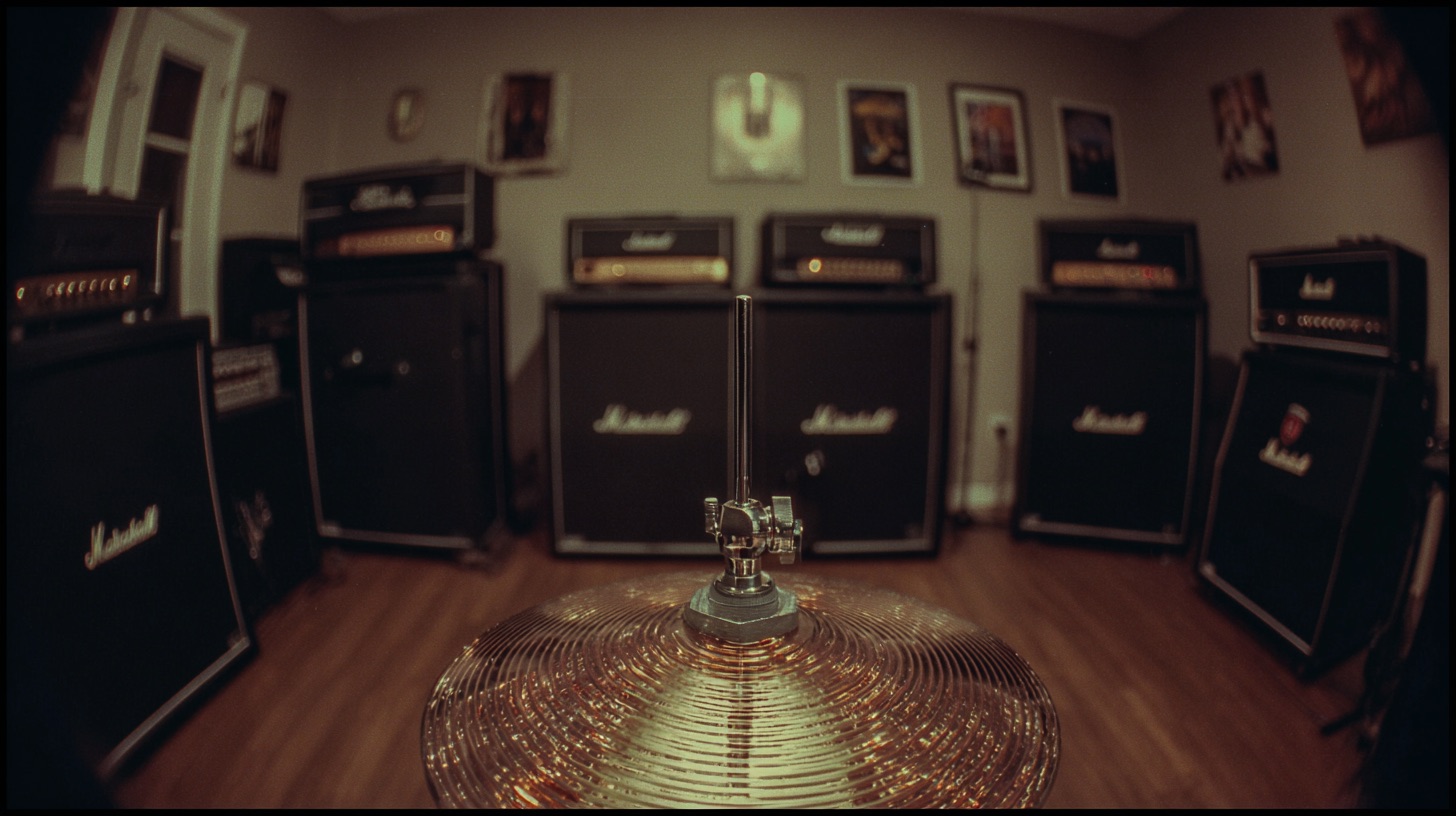
The Best Drum Plugins For Metal (and how to use them)
Nail The Mix Staff
The quest for the perfect metal drum sound can feel endless. You scroll through forums, watch YouTube shootouts, and see your favorite producers pulling up insane kits in Getgood Drums, Slate Drums, or Toontrack’s Superior Drummer 3. The immediate question hits: “Do I need that plugin to get that sound?”
It’s a rabbit hole of epic proportions, fueled by plugin acquisition syndrome (GAS) and the promise of a one-click solution to a killer drum mix. But let’s cut through the noise. Does the specific drum plugin you use actually matter?
The short answer is: yes, but probably not in the way you think.
The real difference between an amateur and a pro mix isn’t a secret plugin folder. It’s about knowing which tools to use for specific jobs and, more importantly, having the skills to use them. Let’s break down where you should focus your energy (and your money).
Why Virtual Drums Kick Ass for Modern Metal
First, let’s get one thing straight. Using virtual instruments and drum plugins for metal production isn’t a shortcut; it’s a strategic advantage. If you’ve ever spent days trying to get a great performance out of a drummer in a less-than-ideal room with a limited mic locker, you already know the pain. Virtual drums solve a ton of problems right out of the gate.
Total Control Over Bleed (Or Lack Thereof)
In an acoustic recording, that hi-hat bleed in your snare mic and cymbal wash in your tom mics is a permanent part of the sound. You can gate it and fight it, but you can’t eliminate it. With drum plugins, bleed is a choice. Want that hyper-clean, modern metal sound where the snare top is completely isolated? Done. Want to dial in a bit of virtual overhead bleed for realism? You can do that too, with a simple fader. In fact, controlling your room sound is one of the most powerful aspects of modern drum production, and you can even make a small drum room sound massive with the right techniques.
Swap Kits and Tune on the Fly
Don’t like the sound of that piccolo snare in the chorus? In the acoustic world, that means stopping the session, swapping the drum, re-micing it, and re-tracking. With a drum plugin, you click a dropdown menu. You can audition dozens of kicks, snares, and cymbals in seconds. You can even change the tuning and dampening of a drum after the part has been performed, giving you an insane amount of tonal flexibility without ever touching a drum key.
Flawless Editing and Performance Augmentation
A drummer rushing the fill going into the breakdown? With MIDI, that’s a five-second fix. Just grab the notes and nudge them into the pocket. Want to reinforce a weak snare hit? Crank up the velocity. Want to rewrite the entire kick pattern to follow a new guitar riff? No problem. This level of control is why sample replacement and augmentation using tools like Slate Trigger 2 are standard practice. There are several killer drum sample replacement techniques that can add punch while keeping a human feel, even on major label records recorded with real drummers.
The Big Question: Where Do Plugins Actually Matter?
Okay, so we agree virtual drums are powerful. But back to the main point: does it matter if you use GGD’s P V Matt Halpern kit versus Toontrack’s Death & Darkness SDX?
When Your Drum Sampler Choice is Everything
Yes, for the initial sound source, your choice of drum sampler absolutely matters. This is a task-specific tool. Just like you wouldn’t use a Fender Twin for a djent tone, you wouldn’t use a vintage jazz brush kit for a deathcore track.
Each library is a snapshot of a specific drummer, a specific kit, in a specific room, recorded by a specific engineer.
- Getgood Drums (GGD): Known for aggressive, mix-ready sounds that are perfect for modern metal and prog. Think Periphery, Monuments, etc. The P IV Matt Halpern and Modern & Massive packs are staples for a reason—they just work for that sound.
- Toontrack Superior Drummer 3 / EZdrummer 3: Incredibly deep and versatile. You can get almost any sound you want, but it often requires more tweaking. Expansion packs like the Death & Darkness SDX (recorded by Forrester Savell) or The Rock Foundry SDX (by Bob Rock) give you access to legendary rooms and kits.
- Steven Slate Drums (SSD 5.5): Another industry standard, famous for its punchy, polished sound that cuts through a dense mix with minimal effort. While these premium libraries are incredible, you can also achieve pro sounds with some of the best free drum VSTs if you know how to process them.

When It Matters Less: The Processing Chain
This is where producers get lost in the sauce. Once you have your raw MIDI performance triggering great samples, the processing begins. You’ll reach for EQs, compressors, transient shapers, and saturation. And you’ll wonder: “Do I need a FabFilter Pro-Q 3, or is my stock EQ enough? Do I need the Slate FG-Stress or the Waves CLA-76?”
Here’s the truth: it doesn’t really matter.
Not in the way you think, anyway. A stock DAW EQ and a premium EQ like the Pro-Q 3 both do the same thing: they boost and cut frequencies. The pro version might have more features like dynamic bands or a linear phase mode, but the fundamental job is the same. A great engineer can get a killer mix with stock plugins because they know what decisions to make. They know they need to carve out 400Hz from the kick to reduce boxiness, add a high-shelf to the cymbals for air, and generally mix a metal kick drum to punch through a wall of guitars.

The tool just helps them do it. If you don’t know why you’re reaching for an EQ, buying a more expensive one won’t fix your mix. The same goes for compression. The ability to truly hear how compression shapes a snare’s transient is infinitely more valuable than owning 15 different compressor plugins.
- Want to learn more about making those critical EQ decisions? Check out our deep dive on EQ Strategies for Mixing Modern Metal.
- Ready to master how to shape drum dynamics? Dive into our guide on Metal Compression Secrets Beyond Just It Loud.
The Real Enemy: Plugin GAS and Technical Headaches
We all know people with folders containing hundreds of plugins they never use. They bought them hoping for a magic bullet, but what they really got was option paralysis and a lighter wallet.
What’s worse is that piling on plugins can create real technical problems. Every plugin introduces a small amount of latency. While your DAW’s delay compensation engine is designed to handle this, it’s not always perfect, especially with complex routing.
This is a huge deal with drums. Say you create a parallel bus to slam your snare with heavy compression—a common trick for dialing in aggressive drums. If the plugin on that bus has more latency than your DAW can compensate for, you’ll get phase cancellation when you blend it back with the main snare track. The result? A weak, thin, hollowed-out sound. This is why it’s crucial to understand your tools and use them purposefully, not just stack them on for the sake of it.
The Final Mix: Focus on Craft, Not Tools
There’s a lot of talk about homogenized sounds and the problem with modern metal drums because “everyone is using the same plugins.” That’s like saying every chef who uses salt and pepper will make the same dish. It’s nonsense.
You could give 100 producers the exact same GGD library and the same stock plugins, and you would get 100 completely different drum mixes. The choices they make—the balance between the kick and snare, the amount of room sound, the specific EQ curves, the compression settings, the reverb—are a product of their taste and experience.
Your job isn’t to find a unique plugin; your job is to develop your taste and your skills. You are already unique. Your brain, your ears, and your musical background are unlike anyone else’s. When you gain the skills to translate the sound in your head to the speakers, your work will be unique by default.
Stop chasing the next shiny object. Instead, invest that time in learning your craft. Master one EQ. Learn one compressor inside and out. Find a drum library that inspires you and learn how to get the most out of it.
That’s where the real magic happens. And if you want to see exactly how the pros make these decisions—what they boost, what they cut, how they compress, and why they do it—you need to see it happen in real-time.
Emmure on Nail The Mix
WZRD BLD & Jeff Dunne mixes "Flag Of The Beast"
Get the Session
Watching guys like Jens Bogren, Will Putney, and Nolly Getgood mix real songs from bands like Meshuggah, Gojira, and Periphery is about more than seeing their plugin chains. It’s about understanding their philosophy and decision-making process. At Nail The Mix, we give you the multitracks and a front-row seat to watch them build a mix from scratch.
Ready to stop guessing and start learning the skills that actually matter? Unlock Your Sound and learn how to mix modern metal beyond the presets.
Get a new set of multi-tracks every month from a world-class artist, a livestream with the producer who mixed it, 100+ tutorials, our exclusive plugins and more
Get Started for $1






